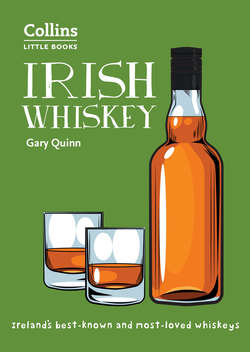Читать книгу Irish Whiskey: Ireland’s best-known and most-loved whiskeys - Gary Quinn - Страница 7
ОглавлениеWhat is Irish Whiskey?
A Beginner’s Guide
In general, Irish whiskey tends towards smooth, sweet flavours and is often referred to as being easy to drink. Unlike Scotch, it does not usually have a smoky, peated flavour, although it can use peat and still be considered Irish whiskey. There are a small number of popular peated Irish whiskeys on the market, such as Kilbeggan’s Connemara Peated Single Malt.
To be called Irish whiskey, the spirit must be distilled in Ireland, North or South, and the distilled spirit then matured for at least three years in wooden casks. People often add a day to that age reference for dramatic effect but three years is the legal minimum.
Irish whiskey can be double- or triple-distilled. Triple distillation is very common with Irish whiskey but double distillation is just as valid. The third distillation is said to add to the feeling of smoothness in the taste.
There are four types of Irish whiskey: malt whiskey, pot still whiskey, grain whiskey, and blended Irish whiskey.
Single Malt Irish Whiskey
In popular culture, the idea of a single malt is often widely understood to reference a sign of excellence but, in fact, it simply refers to the type of whiskey it is. The single in the name refers to the fact that it is made in a single distillery, while the malt refers to the fact that it contains 100 per cent malt barley, as well as water and yeast. It can be peated or unpeated and has a full and pleasant oily texture with a smooth, sweet, and malty finish. It is distilled in a pot still. Popular examples include Dingle Single Malt, Teeling Single Malt, and Bushmills Single Malt.
Single Pot Still Irish Whiskey
Single pot still whiskey is native to Ireland. It emerged in the late 1700s as a way of avoiding a tax on the use of malt. Pot still whiskey uses a combination of malted and unmalted barley. The unmalted part creates a spicy flavour and a creamy texture that allows it to stand apart from the flavour of single malt whiskey. It is distilled in a pot still. Some of the most popular Irish whiskey brands are single pot still whiskey and include Redbreast, Green Spot, and Powers John’s Lane.
Single Grain Irish Whiskey
Irish grain whiskey must have a malt barley component in its recipe, but only up to a maximum of 30 per cent. The remainder can be a combination of unmalted grains such as maize, wheat, or barley. It is distilled in a column still and can be double- or triple-distilled. Popular examples of Irish grain whiskey include Kilbeggan Single Grain, Powerscourt Distillery’s Fercullen 10-year-old Single Grain, and Teeling’s Single Grain.
Blended Irish Whiskey
Blended Irish whiskey is a combination of two or more of the pot still, malt, and grain whiskeys. Generally, the lighter grain whiskey is combined with the heavier malt or pot still to create a new blend or flavour profile. It can also be a combination of all three styles, although this is rare. Tullamore D.E.W. is a great example of all three styles being combined to create an incredibly popular brand. Bushmills Original is a blend of their triple-distilled malt whiskey and a lighter grain whiskey.
Additives
The colour of Irish whiskey comes from the cask it is matured in. However, in order to allow consistency in the colour of a brand over time, the caramel colouring E150 is permitted. Although named after a flavour (caramel) this is a colouring only and has no flavour. It is the only additive which is permitted.
